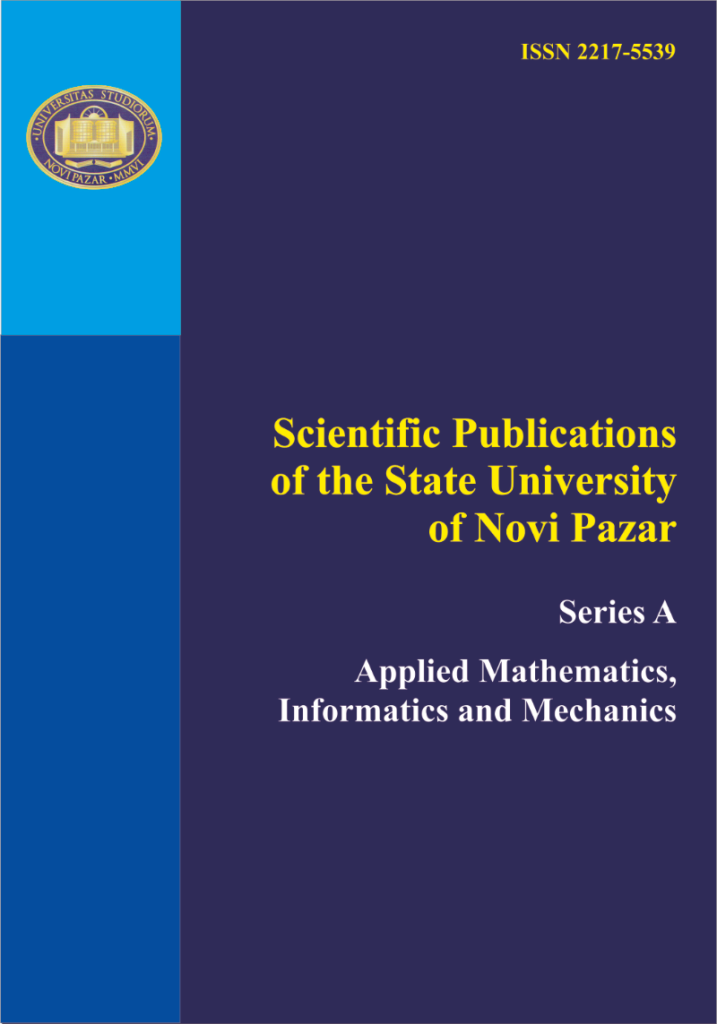
Analytical calculations of the solid angle subtended by a circular detector at linear sources
Authors: Abbas Mahmoud I.
Keywords: geometrical solid angle; geometrical efficiency; linear sources; circular detector
Abstract:
Knowledge of the geometrical solid angle is essential in all absolute measurements of the strengths of radioactive materials and to calibrate detectors. A direct mathematical formalism for the determination of the geometrical solid angle and the geometrical efficiency of a circular detector and an arbitrarily positioned line source is deduced. The results have been compared with previous computational treatments. The comparison shows a very satisfactory agreement in all cases.
References:
[1] J.T. CONWAY, Geometric efficiency for a circular detector and a linear source of arbitrary orientation and position, Nuclear Instruments and Methods in Physics Research A622, (2010) 555-566.
[2] Y.S. SELIM, M.I. ABBAS, Source-detector geometrical ef?ciency, Radiat. Phys. Chem. 44, (1994) 1-4.
[3] M.I. ABBAS, A direct mathematical method to calculate the efficiencies of a parallelepiped detector for an arbitrarily positioned point source, J. Radiat. Phys. Chem.60,(2001) 3.
[4] M.I. ABBAS, HPGe detector photopeak efficiency calculation including self-absorption and coincidence corrections for Marinilli beaker sources using compact analytical expressions, Radiat. Phys. Chem. 54, (2010) 761.
[5] M.I. ABBAS, Y.S. SELIM, Calculation of relative full-energy peak efficiencies of well-type detectors, Nucl. Instrum.MethodsPhys. Res. A480, (2002) 651.
[6] M.I. ABBAS, Y.S. SELIM, S. NAFEE, A simple mathematical method to determine the effi ciencies of log-conical detectors, Radiat. Phys. Chem. 75 (7), (2006) 729-736.
[7] Y.S. SELIM, M.I. ABBAS, M. FAWZY, Analytical calculation of the efficiencies of gamma scintillators. Part I: Total efficiency for coaxial disk sources, Radiat. Phys. Chem. 53 (6), (1998) 589-592.
[8] Y.S. SELIM, M.I. ABBAS,Analytical calculations of gamma scintillators efficiencies. II: total efficiency for wide co-axial disk sources, Radiat. Phys. Chem. 53, (2000) 15-19.
[9] M.I. ABBAS, S. NOUREDDEEN, Analytical expression to calculate total and full-energy peak efficiencies for cylindrical phoswich and lanthanum bromide scintillation detector, Rad. Measur, 46, (2011) 440-445.
[10] M.I. ABBAS, Analytical approach to calculate the efficiency of 4? NaI(Tl) gamma-ray detectors for extended sources, Nuclear Instruments & Methods in Physics Research- A615, (2010) 48-52.
[11] M.I. ABBAS, A new analytical method to calibrate cylindrical phoswich and LaBr3 (Ce) scintillation detectors, Nuclear Instruments & Methods in Physics Research- A621, (2010) 413-418.
[12] M.I. ABBAS, Analytical formulae for borehole scintillation detectors efficiency calibration, Nuclear Instruments & Methods in Physics Research- A622, (2010) 171-175.
[13] M.I. ABBAS, S. HAMMOUD, T. IBRAHIM, M. SAKR, Analytical formulae to calculate the solid angle subtended at an arbitrarily positioned point source by an elliptical radiation detector, Nuclear Instruments & Methods in Physics Research- A771, (2015) 121.
[14] M.I. ABBAS, S. HAMMOUD, T. IBRAHIM, M. SAKR, Analytical formulae to calculate the total efficiency of an arbitrarily positioned point source by an elliptical cylindrical detector,Journal of Nuclear Sciences, Vol. 2, No. 2, (2015) 11-22.
[15] M.I. ABBAS, M.S. BADAWI, I.N. RUSKOV, A.M. EL-KHATIB, D.N. GROZDANOV, A. A. THABET, YU.N. KOPATCH, M.M. GOUDA, V.R. SKOY, Calibration of a single hexagonal NaI(Tl) detector using a new numerical method based on the efficiency transfer method, Nuclear Instruments & Methods in Physics Research- A771, (2015) 110.